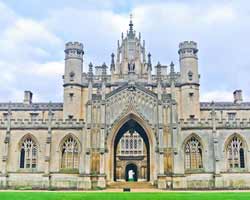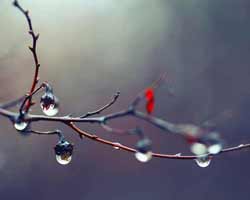Often on commercial jobs you're given very little choice of where to shoot, and you'll have to play the hand you're dealt with. However, sometimes there will be enough time in advance of the shoot to check out a variety of locations until you find the one that suits best. Here are a few things to bear in mind when you get the chance to go location scouting.
Ensure a Location Is Fit for the Purpose
Make sure you understand what the client is looking for and has in mind for the shoot so you can find the right sort of location. A brief like “urban and contemporary” or “industrial and grimy” can have a very wide range of interpretations. What one person thinks of as contemporary will be another person's version of kitsch. When scouting, take as many shots as you can, and send them to the client as soon as possible — smartphones are great for this, as you can email images to a client whilst still standing in the spot where you shot it.

Consider Cost
Besides the obvious fact of how much it will cost to use the location in question — either for a direct hire charge or for a permit to shoot there — don't forget other costs that can creep in. You may need to purchase specific insurance due to conditions at the location, or you may even need to buy specific clothing or equipment, such as PPE gear (Personal Protective Equipment), to be allowed to work on site. The cost of getting to some locations may also be a factor if it's particularly remote. You may have to pay a returnable deposit in case of any damages, and this often needs to be cash. Lastly, don't forget that you should be charging for your time spent traipsing around looking at places, but this sort of thing should have been agreed in advance between you and your client.

How Suitable Is It, Really?
Now look at the practical aspects of the location. Is there a power supply on site, and if so, will it be enough for your needs? Most flash gear is fine running off a household main supply, but if you're bringing in big lights — HMIs or similar — you're probably going to need more power and may need to rent a generator.
How sheltered is the location if it's not completely indoors? Is there cover from the wind and rain? How private is it, and how likely are passers-by to catch an eyeful of what you're shooting? This can matter for security as well as modesty — not only do you not want to attract the wrong sort of attention to your nice expensive camera gear, but you don't want to be arrested for public indecency when one of your models is seen half-naked by some passing children!
How versatile is the space to shoot in? Is there just one good wall or angle you can use, or are there a whole range of different views you can exploit and different positions you can shoot from? If it's a well-known location, will it be possible to avoid shooting the same angle everyone else always gets? What is the overall light like? Is there much of it, and what direction does the location face in relation to the movement of the sun throughout the day?
Some locations are very impressive to shoot in, but they may come with so many rules that it can be hard to get anything done. Always ask if there are conditions attached to shooting — you may not be allowed to tape things down or use certain equipment such as smoke machines. If you're going to have to proverbially wrap the place in cotton wool, it may be worth looking elsewhere!

Last but not least, how easy is the location to find and get to? Is there convenient parking or access to nearby public transport? Will you be able to get heavy equipment in easily, or are there a dozen flights of stairs and no lift? Are you going to spend half the morning on the phone with models and make-up artists directing them around and around the area in an attempt to find your well-hidden spot? I spend a lot of time shooting in central London, and whilst access to public transport is usually not a major problem, parking and road access generally is, and this needs to be borne in mind when picking locations.
Last Thoughts
So, there are quite a few things to think about next time you go out and try and find a suitable location for a job. Above all, take as many pictures of the location as you can, from as many angles as you can, and don't forget to consider less obvious things such as parking and access. I always make sure to add notes to the IPTC data of the picture, such as exactly where it was shot and things to look out for, as I'll likely not remember months later when I need to refer back to it — and a note scribbled down elsewhere will probably get lost. Over the years I've built up a location library of useful places, and it's a very handy reference to fall back on. Don't forget how rapidly things change though, and it's worth checking up on places nearer the time of the shoot if the last time you looked was months or years ago — I've been back to certain locations after a period of time and found the entire site replaced with a block of flats!

Bonus: You can learn photography online with a photography course from the New York Institute of Photography! Get started today.






